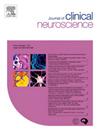“Salvage surgery for vestibular schwannomas after failed stereotactic radiosurgery or radiation: A systematic review and meta-analysis”
IF 1.8
4区 医学
Q3 CLINICAL NEUROLOGY
引用次数: 0
Abstract
Introduction
Stereotactic radiosurgery effectively controls vestibular schwannoma (VS). However, in certain cases, microsurgical resection may be necessary for tumor progression after radiosurgery or, after failure of the latter. The results on the safety and efficacy of salvage surgery for VS are still unclear, with scarce literature on the subject.
Objective
The present study aimed to evaluate the safety and efficacy of salvage surgery on the resection of vestibular schwannomas that have been previously treated with stereotactic radiosurgery or radiotherapy.
Methods
Following PRISMA guidelines, we searched Medline, Embase, and Web of Science databases. We used single proportion analysis with 95 % confidence intervals under a random-effects model, I2 to assess heterogeneity, and Baujat and sensitivity analysis to address high heterogeneity. Eligible studies included those with ≥ 4 patients treated with salvage surgery to resection of vestibular schwannomas after failure of stereotactic radiosurgery or radiotherapy.
Results
Of the 1841 initially identified studies, 18 were selected, involving 455 patients, with a median follow-up of 33 months. The combined analysis showed a 69 % (CI: 58 % − 79 %) rate of good clinical outcomes. Regarding partial resection, the pooled analysis confirmed a 48 % rate (CI: 33 % to 63 %) and a 52 % complete resection rate (CI: 37 % to 67 %). The pooled analysis confirmed a 95 % hearing preservation rate in patients undergoing the retrosigmoid approach (CI: 90 % to 100 %) and a 78 % facial nerve preservation rate (CI: 72 % to 84 %). Regarding complications, the pooled analysis confirmed a 20 % complication rate (CI: 14 % to 28 %). There were no deaths related to the procedure.
Conclusion
Based on the results, our meta-analysis identified that rescue surgery has been shown to be safe and effective for resection of vestibular schwannomas after failure of stereotactic radiosurgery or radiotherapy, based on good facial nerve preservation rate and total lesion resection rate.
立体定向放疗或放疗失败后前庭神经鞘瘤的抢救手术:系统回顾和荟萃分析
立体定向放射治疗可有效控制前庭神经鞘瘤(VS)。然而,在某些情况下,放射手术后或放射手术失败后肿瘤进展可能需要显微手术切除。关于VS抢救手术的安全性和有效性的结果仍然不清楚,关于这一主题的文献很少。目的评价保留手术治疗前庭神经鞘瘤的安全性和有效性,这些前庭神经鞘瘤曾接受立体定向放射手术或放射治疗。方法按照PRISMA指南,检索Medline、Embase和Web of Science数据库。我们采用随机效应模型下95%置信区间的单比例分析,I2评估异质性,Baujat和敏感性分析解决高异质性。符合条件的研究包括在立体定向放射手术或放疗失败后接受保留手术切除前庭神经鞘瘤的≥4例患者。在最初确定的1841项研究中,选择了18项,涉及455名患者,中位随访时间为33个月。综合分析显示69% (CI: 58% - 79%)的临床预后良好。关于部分切除,合并分析证实48%的发生率(CI: 33%至63%)和52%的完全切除率(CI: 37%至67%)。综合分析证实,乙状结肠后入路患者的听力保存率为95% (CI: 90%至100%),面神经保存率为78% (CI: 72%至84%)。关于并发症,合并分析证实了20%的并发症发生率(CI: 14%至28%)。没有与手术有关的死亡。结论基于上述结果,我们的meta分析发现,基于良好的面神经保存率和病变全切除率,救援手术对于立体定向放化疗或放疗失败后的前庭神经鞘瘤切除是安全有效的。
本文章由计算机程序翻译,如有差异,请以英文原文为准。
求助全文
约1分钟内获得全文
求助全文
来源期刊

Journal of Clinical Neuroscience
医学-临床神经学
CiteScore
4.50
自引率
0.00%
发文量
402
审稿时长
40 days
期刊介绍:
This International journal, Journal of Clinical Neuroscience, publishes articles on clinical neurosurgery and neurology and the related neurosciences such as neuro-pathology, neuro-radiology, neuro-ophthalmology and neuro-physiology.
The journal has a broad International perspective, and emphasises the advances occurring in Asia, the Pacific Rim region, Europe and North America. The Journal acts as a focus for publication of major clinical and laboratory research, as well as publishing solicited manuscripts on specific subjects from experts, case reports and other information of interest to clinicians working in the clinical neurosciences.
 求助内容:
求助内容: 应助结果提醒方式:
应助结果提醒方式:


